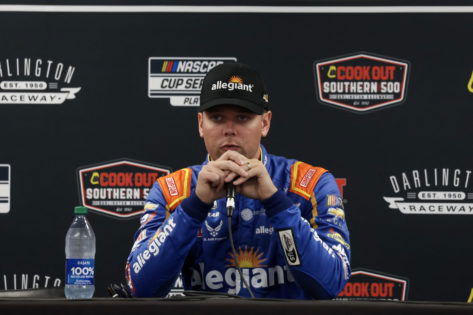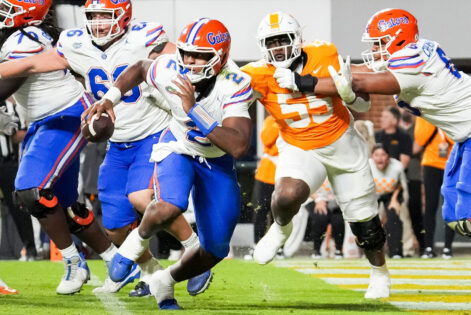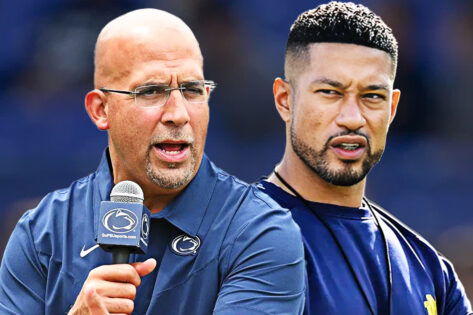Back in December 2024, NASCAR COO Steve O’Donnell gave fans a reason to pause. He hinted that the Chicago Street Race, NASCAR’s bold push into urban racing, might not survive past its current deal. During a podcast interview, he explained, “We’re just looking at 2025. It’ll be the third year of a three-year run, and each year we’ve wanted to build upon the momentum.” But it wasn’t just the past he reflected on, it was the future he left open-ended. O’Donnell made it clear: the Southern California market, left in limbo since the loss of Fontana, was now in the spotlight.
NASCAR had reason to rethink its Chicago plans. The city’s unpredictable weather twice disrupted the race weekend. The 2023 and 2024 events, held on July 4th, were marred by rain-soaked streets and shortened races. Even with strong viewership and notable wins by Shane van Gisbergen and Alex Bowman, the rain literally put a damper on the festivities. And while the races drew new fans, 70% first timers according to Steve Phelps, it wasn’t enough to erase concerns. Apart from weather issues, NASCAR also had to deal with multiple authorities for racing on the streets of Chicago.
Now, almost half of the season has passed, and NASCAR is yet to make a decision on a contract extension with the City of Chicago. Yet the city isn’t stepping off the gas. In a bold move, Illinois pledged $5 million in its latest state budget to support the race. It’s a last-lap push to keep NASCAR anchored in Grant Park, and a clear message that Chicago is not giving up its spot on the calendar without a fight.
Chicago’s five million push shocks many!
Illinois lawmakers recently earmarked a stunning $5 million in the state budget to help fund the 2025 NASCAR Chicago Street Race. The money comes from the state’s general revenue fund and is intended to cover “costs associated with operating expenses.” That includes barrier installation, tire delivery, and labor. Notably, the number is bold, especially considering how public costs have already been scrutinized after the inaugural race in 2023 drained nearly $4 million from the city’s pocket.
However, state officials broke down how the money will be used. Two grants were included in the current budget. One covers $2 million in labor and staffing costs from last year’s event, including tire handling and barrier setup. The other, a $5 million capital allocation, is for installing new racecourse barriers, half of which is still pending approval. As it stands, NASCAR must submit expenses after this year’s July event to trigger reimbursement. This level of detail shows how serious Chicago is about keeping the race and keeping NASCAR.
“NASCAR’s Chicago Street Race received a new $5 million allocation from the state’s general revenue fund for ‘costs associated with operating expenses.’…[Gov. JB] Pritzker said he couldn’t speak to why $5 million was put in the budget.” – @ChicagoTribune https://t.co/VRZmoxmgI7
— Adam Stern (@A_S12) June 18, 2025
Yet the surprise isn’t just the dollar amount, it’s that Chicago is committing money with no guaranteed return. NASCAR still hasn’t agreed to extend its contract beyond 2025. That leaves the city spending millions to keep its foot in the door while NASCAR flirts with other cities. However, Governor J.B. Pritzker defended the budget line, saying, “Specifically, the investment in tourism yields revenue for the state that is vastly more than the investment that gets made by our tourism office.” It’s a risky bet, but one that reflects just how badly Chicago wants to remain in the game.
Notably, data backs Mr. Governor’s comments. According to media reports, in 2024, NASCAR’s Chicago weekend generated an estimated $128.1 million in local economic impact. That includes $72 million from out-of-town visitors and more than $55 million from corporate spending. It was up 17% from 2023. Despite weather issues and logistical concerns, the race brought 53,000 unique visitors, many from outside the region, who filled hotels, bars, and restaurants. But there’s a catch: while the local economy saw a surge, NASCAR failed to be profitable in Chicago.
Commissioner of NASCAR, Steve Phelps, didn’t sugarcoat it. “We’re willing to invest in Chicago financially. It’s a difficult race for us. It cost $50 million to put that race on, and we, unfortunately, didn’t sell $50 million worth of tickets and sponsorship,” he said as quoted by SBJ. While the exposure was great, the bottom line wasn’t. NASCAR hasn’t seen a profit from Chicago, and that makes its long-term future shaky. Still, Phelps said, “Was it a smart decision for us? I believe it was. I think it helped us with both Amazon and Warner Bros. Discovery coming on board.”
Still, numbers matter. NASCAR is a business. And despite fan engagement, Chicago’s rain and political hurdles have made the street race difficult to sustain. There’s also pushback from locals, especially around July 4th. Locals have said that they don’t want the race on a holiday weekend. NASCAR knows its brand needs a balance between innovation and practicality. That’s why eyes have turned westward. With San Diego quietly entering the conversation, NASCAR may already be planning its next urban adventure.
A sunny detour? NASCAR eyes San Diego!
The Chicago race might have shown that NASCAR can work in a cityscape, but it also exposed the limits of the Windy City’s weather and infrastructure. Now, San Diego has emerged as a promising option. According to a report from The Athletic, NASCAR is in talks with the San Diego Sports Tourism Commission for a potential 2026 street race. The organization declined to comment publicly, but behind-the-scenes discussions appear serious.
San Diego offers something Chicago can’t, near-perfect weather. The city averages under 10 inches of rain per year, compared to Chicago’s nearly 40. That alone could solve the biggest problem the current event faces. With NASCAR’s previous California track in Fontana out of commission, San Diego fills a huge geographic and market gap. NASCAR has tried to stay active in Southern California, even moving the Clash to the LA Coliseum in past years, but nothing long-term has stuck. Steve Phelps recently emphasized how important the California market is.
“That market is an important market for us. What the future of that particular facility is, I’m still unsure,” he had said. But now, a San Diego Street course could be the answer. Ben Kennedy, one of NASCAR’s key schedule architects, said, “We’re working on planning the 2026 calendar.” That planning includes balancing domestic, international, and now urban street races. If San Diego gets the green light, it could either replace Chicago or add to NASCAR’s growing portfolio of city races. Either way, the California coast might soon roar with V8s once again.
The post Iconic Track Lures NASCAR With $5M, Refusing to Give Up Season Schedule appeared first on EssentiallySports.



